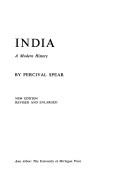| Listing 1 - 4 of 4 |
Sort by
|
Book
ISBN: 0810166526 9780810166523 0810128942 9780810128941 Year: 2013 Publisher: Evanston, Ill.
Abstract | Keywords | Export | Availability | Bookmark
 Loading...
Loading...Choose an application
- Reference Manager
- EndNote
- RefWorks (Direct export to RefWorks)
Longlist finalist, 2015 Historia Nova Prize for Best Book on Russian Intellectual and Cultural History In post revolutionary Russia, as the Soviet government pursued rapid industrialization, avant-garde artists declared their intent to serve the nascent state and to transform life in accordance with their aesthetic designs. Despite their utilitarian intentions, however, most avant-gardists rarely created works regarded as practical instruments of societal transformation. Exploring this paradox, Vaingurt claims that the artists' fusion of technology and aesthetics prevented their creations from being fully conscripted into the arsenal of political hegemony. The purposes of avant-garde technologies, she contends, are contemplative rather than constructive. Looking at Meyerhold's theater, Tatlin's and Khlebnikov's architectural designs, Mayakovsky's writings, and other works from the period, Vaingurt offers an innovative reading of an exceptionally complex moment in the formation of Soviet culture.--
Machinery in literature. --- Art and technology. --- Arts, Russian --- Russian literature --- Avant-garde (Aesthetics) --- History and criticism. --- History --- History and criticism

ISBN: 0472071408 0472051407 0472900358 9780472900350 9780472051403 9780472071401 Year: 2011 Publisher: Ann Arbor, Michigan : University of Michigan Press,
Abstract | Keywords | Export | Availability | Bookmark
 Loading...
Loading...Choose an application
- Reference Manager
- EndNote
- RefWorks (Direct export to RefWorks)
Today we commonly describe ourselves as machines that "let off steam" or feel "under pressure." The Lives of Machines investigates how Victorian technoculture came to shape this language of human emotion so pervasively and irrevocably and argues that nothing is more intensely human and affecting than the nonhuman. Tamara Ketabgian explores the emergence of a modern and more mechanical view of human nature in Victorian literature and culture. Treating British literature from the 1830s to the 1870s, this study examines forms of feeling and community that combine the vital and the mechanical, the human and the nonhuman, in surprisingly hybrid and productive alliances. Challenging accounts of industrial alienation that still persist, the author defines mechanical character and feeling not as erasures or negations of self, but as robust and nuanced entities in their own right. The Lives of Machines thus offers an alternate cultural history that traces sympathies between humans, animals, and machines in novels and nonfiction about factory work as well as in other unexpected literary sites and genres, whether domestic, scientific, musical, or philosophical. Ketabgian historicizes a model of affect and community that continues to inform recent theories of technology, psychology, and the posthuman. The Lives of Machines will be of interest to students of British literature and history, history of science and of technology, novel studies, psychoanalysis, and postmodern cultural studies.
English literature --- Literature and technology --- Machinery in literature --- Machinery --- Technology --- English --- Languages & Literatures --- English Literature --- History and criticism --- History --- Social aspects --- Applied science --- Arts, Useful --- Science, Applied --- Useful arts --- Machines --- Industry and literature --- Technology and literature --- Curious devices --- Science --- Industrial arts --- Material culture --- Manufactures --- Power (Mechanics) --- Mechanical engineering --- Motors --- Power transmission --- British literature --- Inklings (Group of writers) --- Nonsense Club (Group of writers) --- Order of the Fancy (Group of writers) --- India --- History. --- Technology -- Social aspects -- Great Britain -- History -- 19th century --- Literature and technology -- Great Britain -- History -- 19th century --- Machinery -- Great Britain -- History -- 19th century --- English literature -- 19th century -- History and criticism --- Machinery in literature. --- History and criticism.
Book
ISBN: 9781350069503 1350069507 1350069515 1350069523 1350069531 1350231541 9781350069527 9781350069510 9781350069534 Year: 2019 Publisher: London : Bloomsbury Publishing,
Abstract | Keywords | Export | Availability | Bookmark
 Loading...
Loading...Choose an application
- Reference Manager
- EndNote
- RefWorks (Direct export to RefWorks)
"This volume asks what classical learning can bring to the table of posthuman studies, assembling chapters that explore how exactly the human self of Greek and Latin literature understands its own relation to animals, monsters, objects, cyborgs and robotic devices"--
Animals in literature. --- Classical literature --- Classical literature. --- Cyborgs in literature. --- Machine theory in literature. --- Machinery in literature. --- Monsters in literature. --- Object (Philosophy) in literature. --- Philosophical anthropology in literature. --- History and criticism. --- Classical Literature --- Ancient Culture and Society (Classical Studies) --- Philosophy of Gender and Sexuality
Book
ISBN: 9782753540460 2753540462 2753557306 Year: 2015 Volume: *116 Publisher: Rennes: Presses universitaires de Rennes,
Abstract | Keywords | Export | Availability | Bookmark
 Loading...
Loading...Choose an application
- Reference Manager
- EndNote
- RefWorks (Direct export to RefWorks)
Ce livre étudie la place et la représentation de la mécanique dans la culture du Moyen Âge et plus spécialement dans les textes littéraires qui s’emparent des machines. L’écrivain se considère lui aussi comme un artisan et l’engin renvoie à l’artifice de la création littéraire. Au carrefour entre arts mécaniques et imaginaire poétique, s’expriment ainsi les ambiguïtés de la figure du créateur.
Mechanics in literature --- Machinery in literature --- Literature, Medieval --- Mécanique dans la littérature --- Machines dans la littérature --- Littérature médiévale --- Themes, motives --- History and criticism --- Thèmes, motifs --- Histoire et critique --- French literature --- History and criticism. --- Mécanique dans la littérature --- Machines dans la littérature --- Littérature médiévale --- Thèmes, motifs --- French literature - To 1500 - History and criticism. --- Literary Theory & Criticism --- Medieval & Renaissance Studies --- littérature médiévale --- imaginaire --- machine --- roman
| Listing 1 - 4 of 4 |
Sort by
|

 Search
Search Feedback
Feedback About UniCat
About UniCat  Help
Help News
News